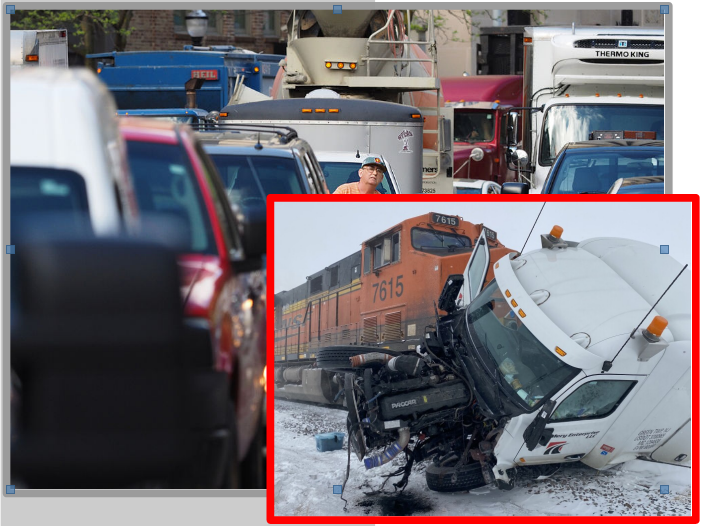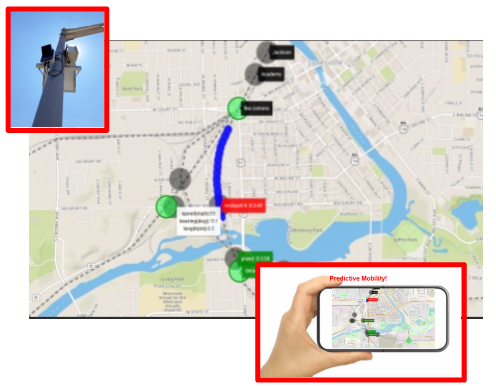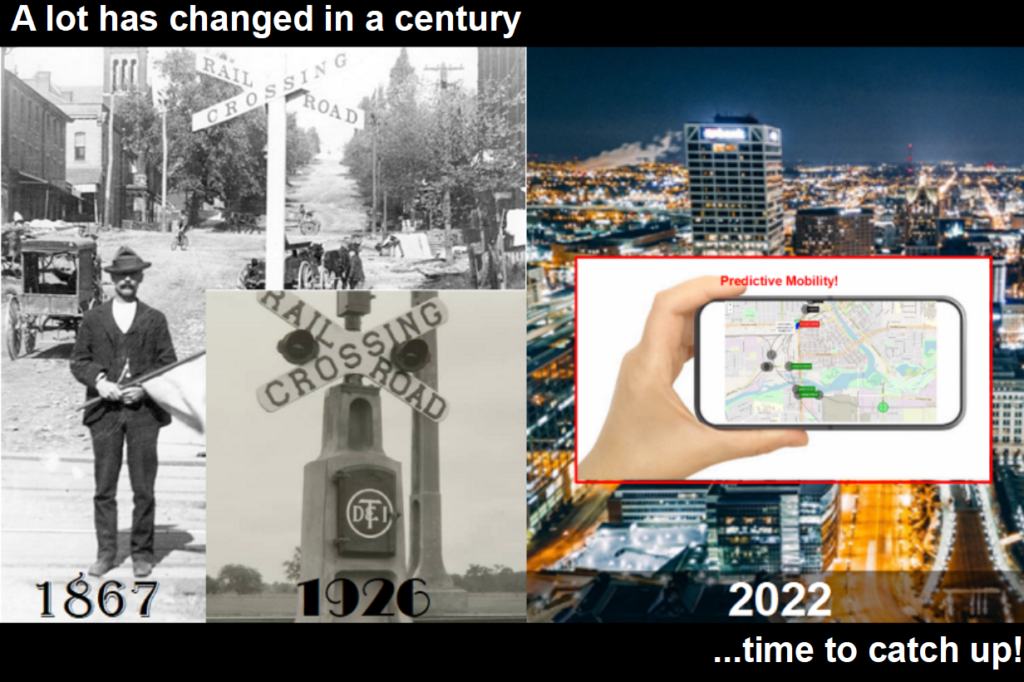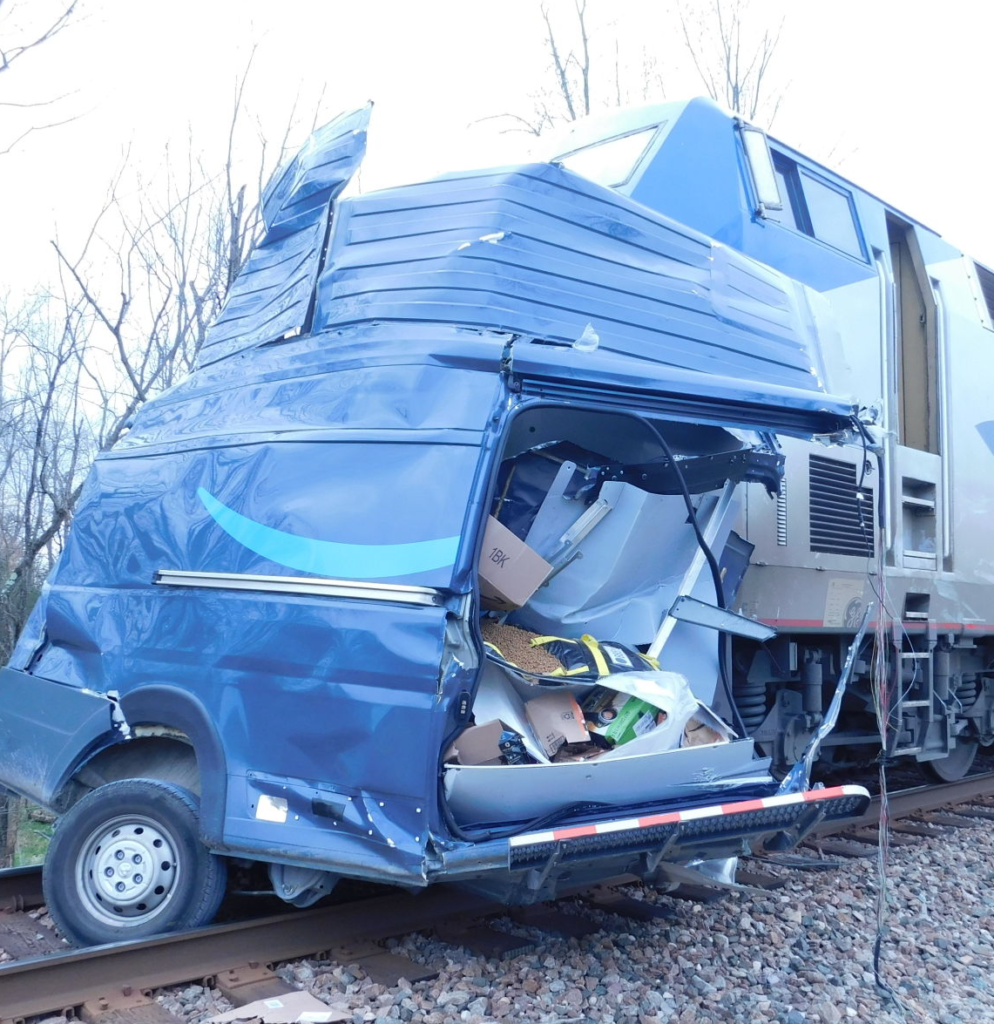Why Predictive Mobility?
Predictive Mobility solves the problem of highway traffic congestion and blocked emergency vehicles at grade level rail crossings by providing advanced warning and ability to avoid blocked crossings all together. Predictive Mobility also measures the status of highway vehicles on the crossings enabling rail traffic and public safety to address blockages of rail with enough advanced warning to avoid collisions.

How does it Work?
Predictive Mobility uses multiple sensor data combined with artificial intelligence to provide the most accurate measure of rail traffic and highway traffic. Vehicle parameters are collected from a network of sensors and combined with cloud-based artificial intelligence platform to generate a real-time predictive model of rail and highway traffic along with crossing open/block times. The information is typically delivered in a variety of formats depending on type of use. Formats include web/mobile applications for individual users, cloud API for Computer Aided Dispatch and Transportation Management Software, or direct integration into traffic hardware.

Community Benefits
Reduced community frustration and improved safety
Citizen fuel cost reduction: $120,000/yr/crossing
Carbon reduction: 350,000,000g/yr/crossing
Commute time reduction: 60 hr/yr/crossing
Fire operations reduction: $30,000/yr/crossing
Response time reduction: 3 minutes/call/crossing
Railroad Benefits
Reduced community frustration and improved safety
Reduced risk of collision with stalled vehicles
Improved identification of rail trespassing
Faster to implement and less costly alternative to bridges and tunnels

Updating the 100-year-old-solution
Cross bucks patented in 1867 and Red Signal Lights first implemented in 1926 still act as the current standard in identifying rail right-of-way. Fixed yellow signs placed before the crossing are considered “early warning”. These signs provide ZERO information about current crossing status that could avert congestion and blocked emergency crews or obstructions for oncoming locomotives. Predictive Mobility application provides either MUTCD-compliant Variable Message Signage, Integration to Transportation management systems and/or web/mobile/API applications directly to user or vehicle. A Predictive Mobility service offering gives future open/close times and suggests alternate routes and helps to identify stalled vehicles on the rail road right of way.

Improving Safety by Changing Behavior:
There are over 200,000 public at-grade crossings in the US. More than 50% have automatic warning systems while 34.7% have flashing lights and gates. More than 60% of collisions occur at crossings with automatic warning systems. 94% of train-vehicle collisions can be attributed to driver behavior or poor judgment. Systems are needed that better engage users, measure behavior and have the dynamic communication to modify behavior. Predictive Mobility gives more timely and relevant information about crossing status. Predictive Mobility can monitor driver behavior and may be used to engage and modify future behavior through Variable Message Signage and direct messaging to connecting drivers and vehicles.vers and vehicles.
